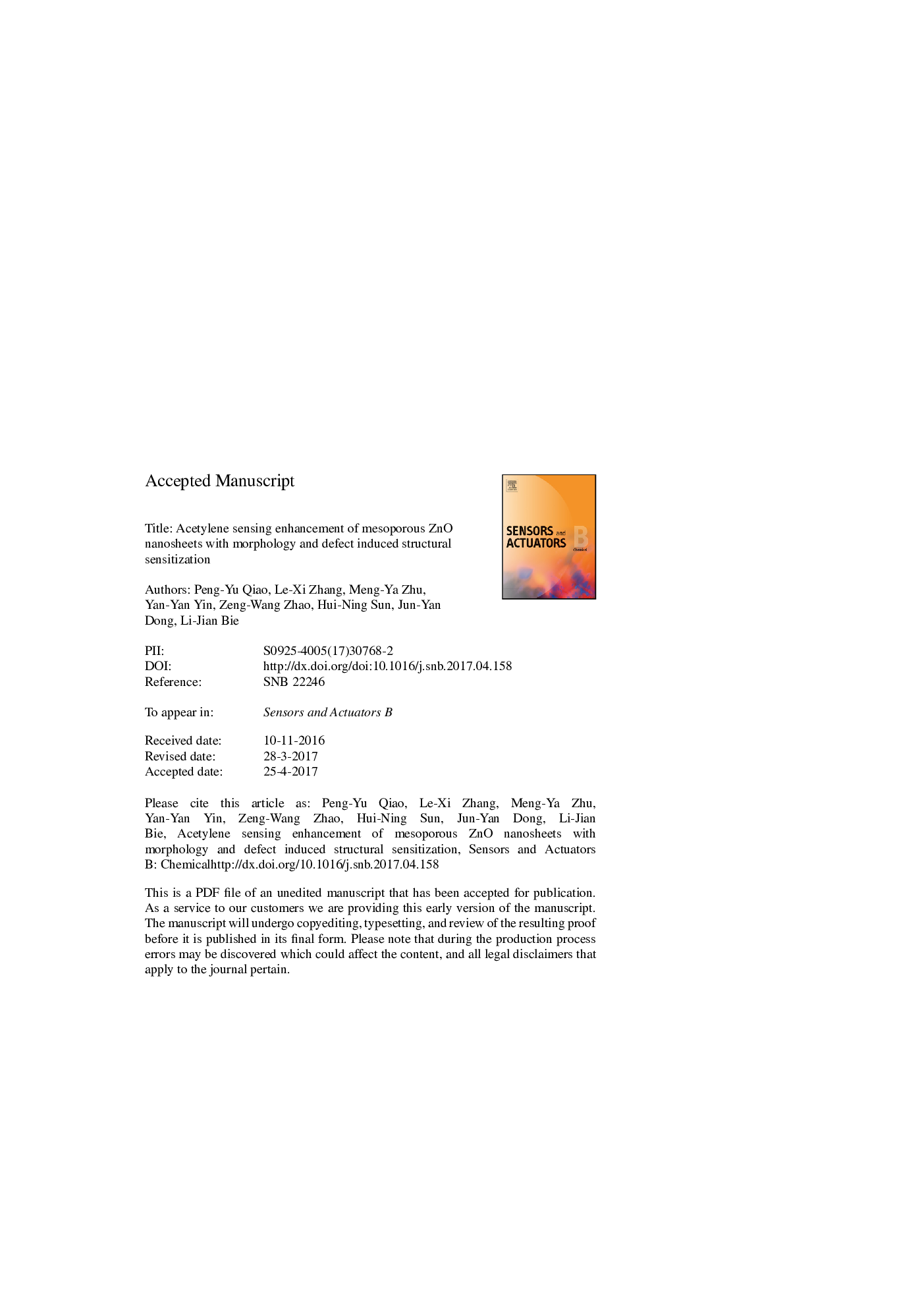| Article ID | Journal | Published Year | Pages | File Type |
|---|---|---|---|---|
| 5008768 | Sensors and Actuators B: Chemical | 2017 | 33 Pages |
Abstract
Mesoporous ZnO nanosheets showing a hierarchical structure were successfully synthesized through a facile hydrothermal process, followed by annealing of as-obtained precursors. The structure, morphology, specific surface area and surface defect of these ZnO nanosheets were charteterized by X-ray diffraction (XRD), field emission scanning electron microscope (FESEM), transmission electron microscopy (TEM), N2 adsorption-desorption baded on the Brunauer-Emmett-Teller (BET) method and photoluminescence (PL) analysis. The nanosheets are well crystallized in wurtzite structure with mesoporous feature. Abundant intrinsic defects were confirmed on ZnO surface by optical characterization. Gas sensors based on these ZnO nanosheets exhibit high response, fast response-recovery, and good selectivity to 1-4000 ppm (parts per million, 10â6 L/L) acetylene (C2H2) at the optimum operating temperature (OOT) of 400 °C. Extremely low concentration acetylene (down to 1 ppm) can be readily detected with a high response value (Sr = 10). Furthermore, it is worth noting that the acetylene sensing behavior under a moderate temperature of 285 °C was also satisfied, which is lower than the autoignition temperature of acetylene (305 °C). The excellent acetylene sensing performance is mainly attributed to the structural sensitization with large specific surface area, abundant mesopores, high contents of intrinsic defects and characteristically small thickness.
Related Topics
Physical Sciences and Engineering
Chemistry
Analytical Chemistry
Authors
Peng-Yu Qiao, Le-Xi Zhang, Meng-Ya Zhu, Yan-Yan Yin, Zeng-Wang Zhao, Hui-Ning Sun, Jun-Yan Dong, Li-Jian Bie,
